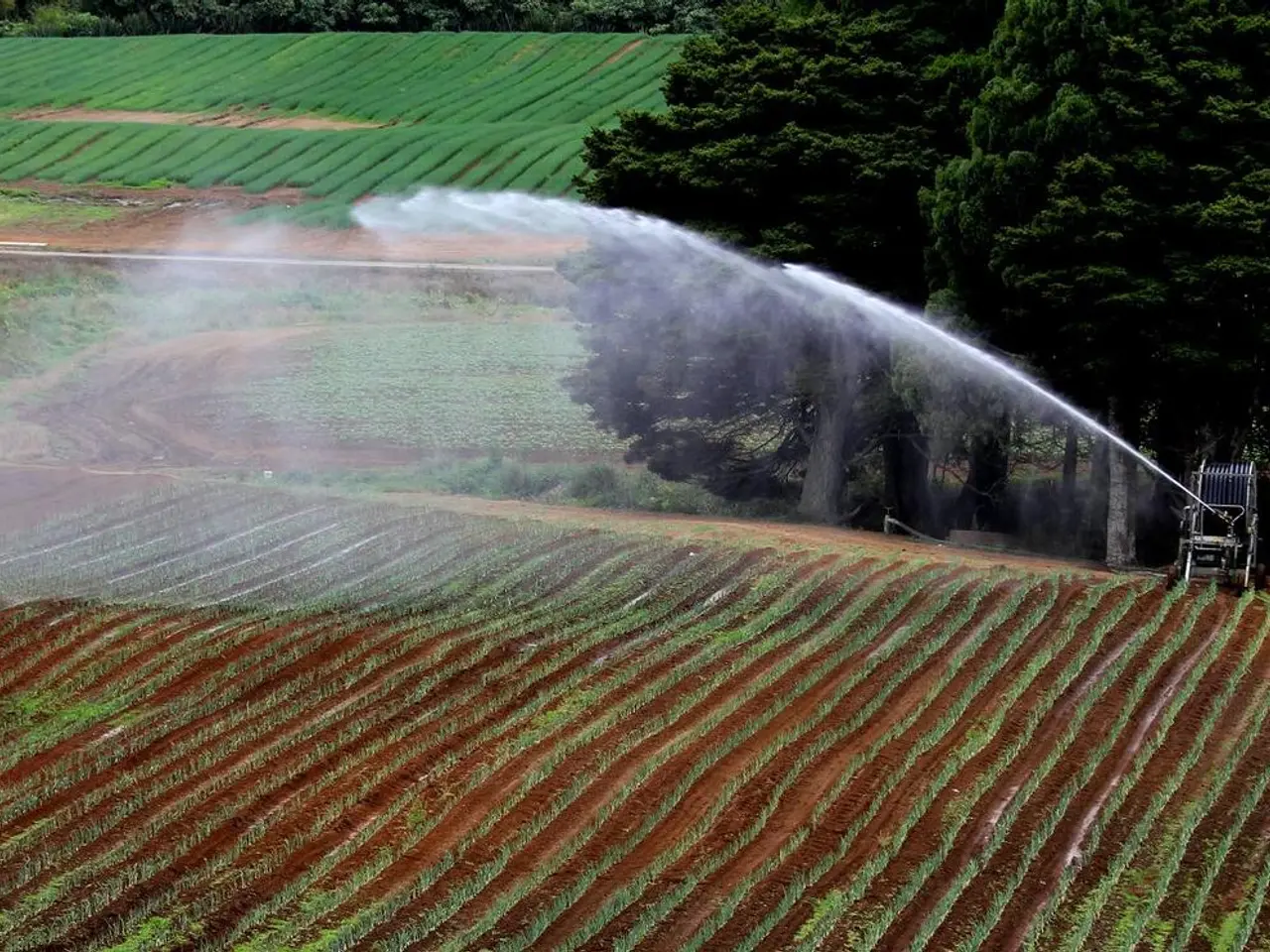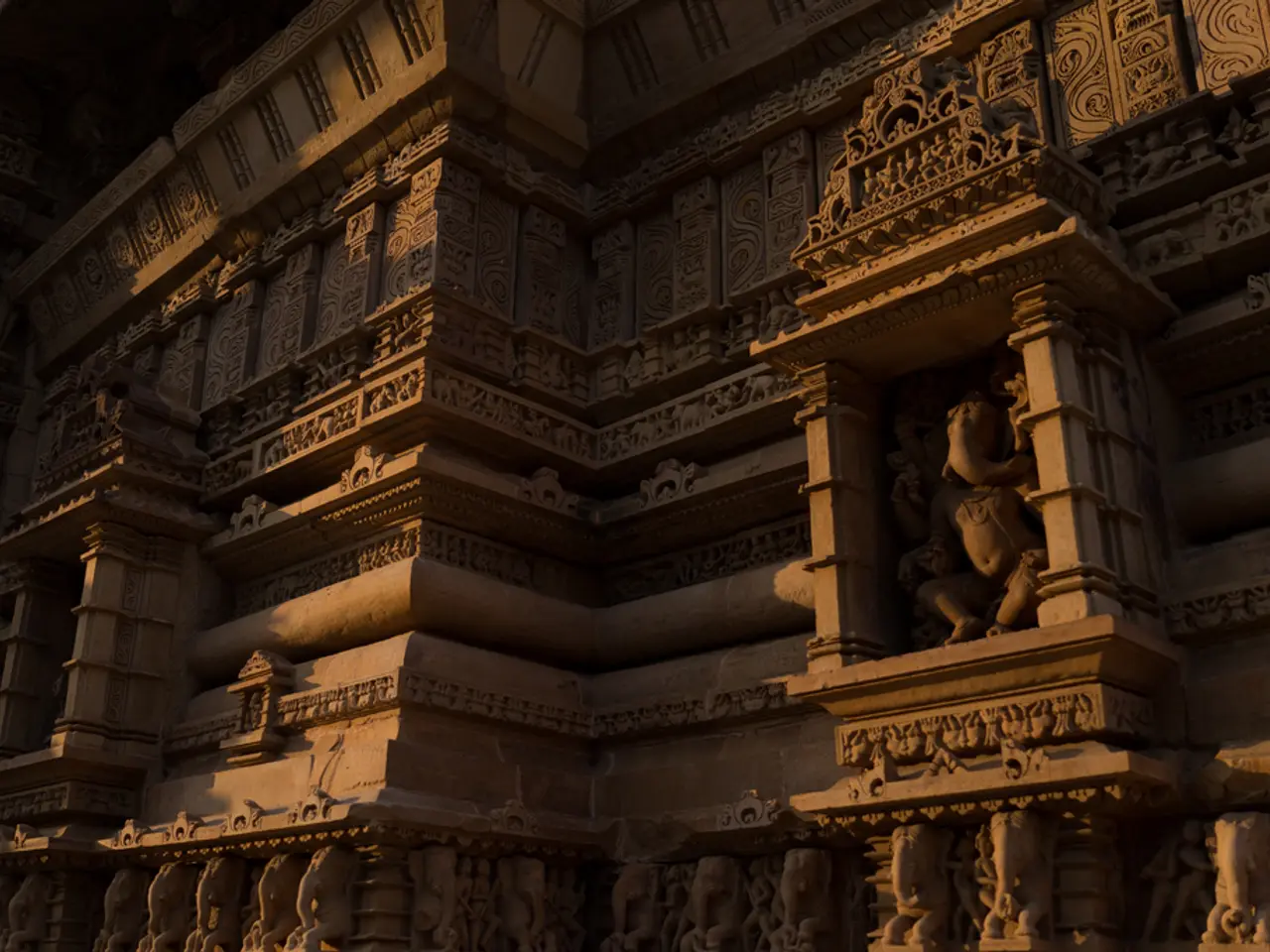Grass struggling to thrive on your lawn? Experts discuss the option of laying turf directly onto existing grass for a fresh start.
In the quest for a lush, green lawn, many homeowners consider laying turf as a solution to patchy or unhealthy grass. However, it's essential to approach this task with care to ensure success. Fiona Jenkins, a landscaper and gardening expert with over 25 years of experience, shares her insights on the best practices for turfing.
When dealing with patchy lawns, the key step is to prepare the ground carefully in each patchy section. This process involves removing weeds and old grass, digging out these sections, and loosening the soil to create a good rooting environment. Once the soil is ready, cut turf pieces to fit only the bare patches and lay them firmly on the prepared soil. After that, roll or lightly press the turf down to ensure good soil contact, and water thoroughly immediately after laying to help the new turf take root successfully.
However, laying new turf directly over existing grass is generally not recommended due to difficulties in rooting and establishment. The old lawn can hinder proper rooting and turf establishment, and for healthy new turf growth, the old grass should typically be removed, and the soil treated or prepared before turfing.
There are instances when laying turf over existing grass should be avoided. If the old grass is dense, patchy, or unhealthy, it is unlikely to allow new turf roots to establish well. If the soil underneath is compacted or not properly prepared, the new turf needs good soil contact. If you want instant, uniform turf coverage rather than patchwork fixes, removing the old grass and prepping the soil provides a better base for turf laying and long-term lawn health.
In summary, for a healthy and thriving lawn, proper soil preparation, timing, and careful consideration are crucial. When dealing with patchy lawns, prepare patch sections, cut turf to fit, lay and water thoroughly. If you have an existing dense or unhealthy grass, remove the old grass and prepare the soil before turfing. If you want to avoid soil disturbance, consider overseeding instead of turfing.
Here's a handy guide to help you make informed decisions:
| Situation | Recommended Action | |----------------------------------|--------------------------------------------| | Patchy lawn with bare soil patches| Prepare patch sections, cut turf to fit, lay and water thoroughly| | Existing dense or unhealthy grass | Remove old grass and prepare soil before turfing| | Want to avoid soil disturbance | Consider overseeding instead of turfing |
Proper timing and soil preparation, along with avoiding the hottest times of day, also play vital roles in successful turf laying. It's not recommended to lay turf over grass if the old lawn has failed due to poor soil conditions, such as being too wet or too dry. New turf may experience weeds coming through from the existing turf, and it's not advisable to lay turf over grass if the lawn has problems with perennial weed growth.
In cases where pests or diseases have killed off your old lawn, it's better to deal with the issue before trying to turf over it. A recommended tool for rotovating compacted soil is an Electric Tiller Rotavator and Cultivator. Overseeding an old lawn is an option if you don't want to take up the old lawn. The best time for overseeding is in spring or late summer. Instead of covering the whole area with new turf, you could sort out bare areas with patches of turf cut to size. Adding a good layer of topsoil before laying new turf can help with rooting.
In the end, a beautiful lawn is within your reach with the right knowledge and careful planning. Happy turfing!
- To ensure the success of laying new turf, it's important to prepare each patchy section meticulously by removing weeds, old grass, digging out these sections, and loosening the soil for a good rooting environment.
- If you have an existing dense or unhealthy grass, it is generally advisable to remove the old grass and prepare the soil before laying new turf for healthy new turf growth.
- As an alternative to turfing, overseeding can be a good option if you want to avoid soil disturbance and prefer to maintain the existing lawn while addressing its bare spots or poor growth areas.




